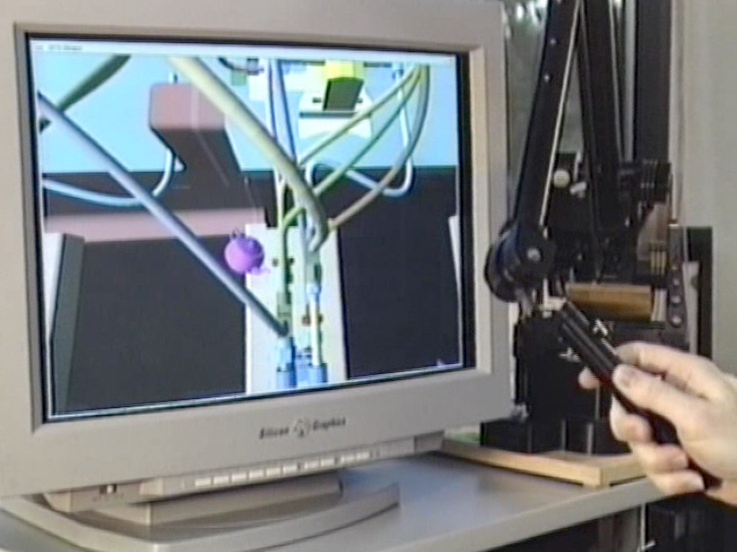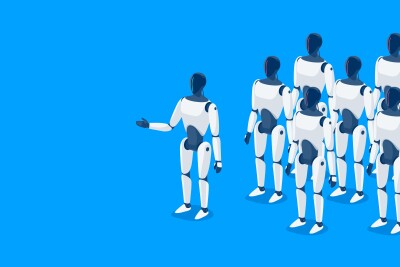Talking with Geomagic CEO Ping Fu about the acquisition of Sensable Technology
MORRISVILLE, N.C. – “Haptic feedback as a natural user interface always made sense to me,” said Geomagic CEO Ping Fu. “We have digital music. We have digital visualization. The virtual space of touching just always made sense.”
Now Fu has purchased a company in Sensable Technology that she believes has “the most sophisticated” technology in what’s known as the haptics field, devices that allow the user to interact with software programs using force feedback – the sense of touch. The company’s Phantom products are articulated arms with a handle you can hold like a paint brush, or knife, or pen, and whatever it is you’re “touching” on screen provides feedback through the arm.
“The feel is actually quite real,” said Fu, who’s been working with the technology since its early development. “You can feel that it’s wood, it’s butter, it’s steel. It’s very cool.” She feels she can get manufacturing costs down, improve the articulation of the arm, and start to bring at least the lower-cost versions of the Phantom to a wider audience.
“Haptic feedback has been projected as something that will be in everybody’s home in 2018,” she said, “which is right in parallel with the 3D printer. And that’s interesting. If it’s in everybody’s home by 2018, it will be in a lot of professionals’ hands in 2013. Just look at the popularity of the Wii and the Kinect. People want this very natural user interface with our hands.”
The haptics line is just one piece of the Sensable acquisition, though. The company also has a voxel-based, volumetric CAD/CAM solution that Fu said is very complementary with Geomagic’s modeling software. “I don’t have a voxel engine,” Fu said, “and I wanted one.” Sensable’s FreeForm and ClayTools software packages allow for virtual sculpting of 3D data and have tools for preparing digital models for manufacturing (particularly for mold and casting production methods) including draft analysis and complex parting line creation.
The two companies already share resellers, Fu said, and the software benefits of the acquisition should be realized quickly. “It’s really just making the IO streamlined so you don’t have to save out, take the data over to another platform, that kind of thing,” she said. “That can be done within a quarter or so. Then over time there will be a lot more integration. Users won’t initially be able to use the force feedback engine in Geomagic – it will be in Sensable – but it will be a good deal easier and there will be better pricing. Maybe within a year there will be incremental things being introduced into Geomagic … We’ll try some new things in the lab first and see how the users feel about it. But we’re looking at a much simpler, much more intuitive way of using captured data with feel and touch.”
Fu has ideas for improving the force feedback hardware, as well. “They designed their arm back when Bluetooth wasn’t as popular,” she said by way of example. “The force feedback engine on a chip is not very big. I’m looking more at Star Trek stuff, like gloves on your hand, so that every one of our fingers can feel it.”
Applications already include medical training and artistic modeling for product production, but the imagination spins when one considers the possibilities of working with captured 3D data. You could scan a landscape and register the point clouds and then use a haptic interface to sculpt a golf course, scooping out the sandtraps and water hazards. Those doing inspection would have a whole new way of testing a product’s surface without having to actually touch the object – just scan it and virtually touch it.
Or how about an educational program where kids can interact with, say, Google Earth in a tactile way? “I’d like to touch that building,” Fu said, “just push it away. Or put my hand on the top of the Himalayas. Feel the rock and touch it.”
If you’d like to see an explanation of the Sensable capabilities, take a look at this BBC program from 2009.






